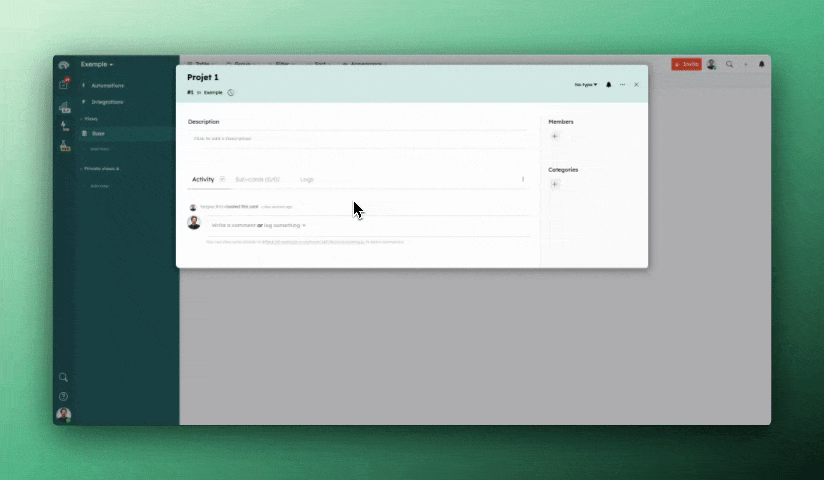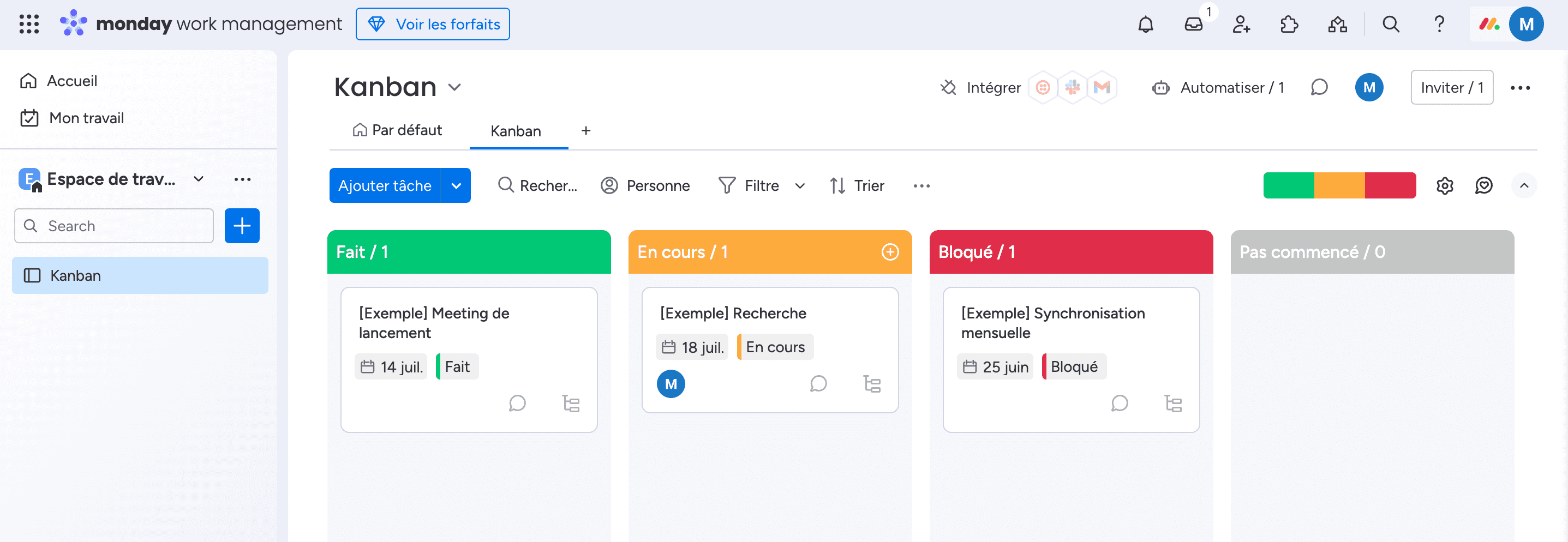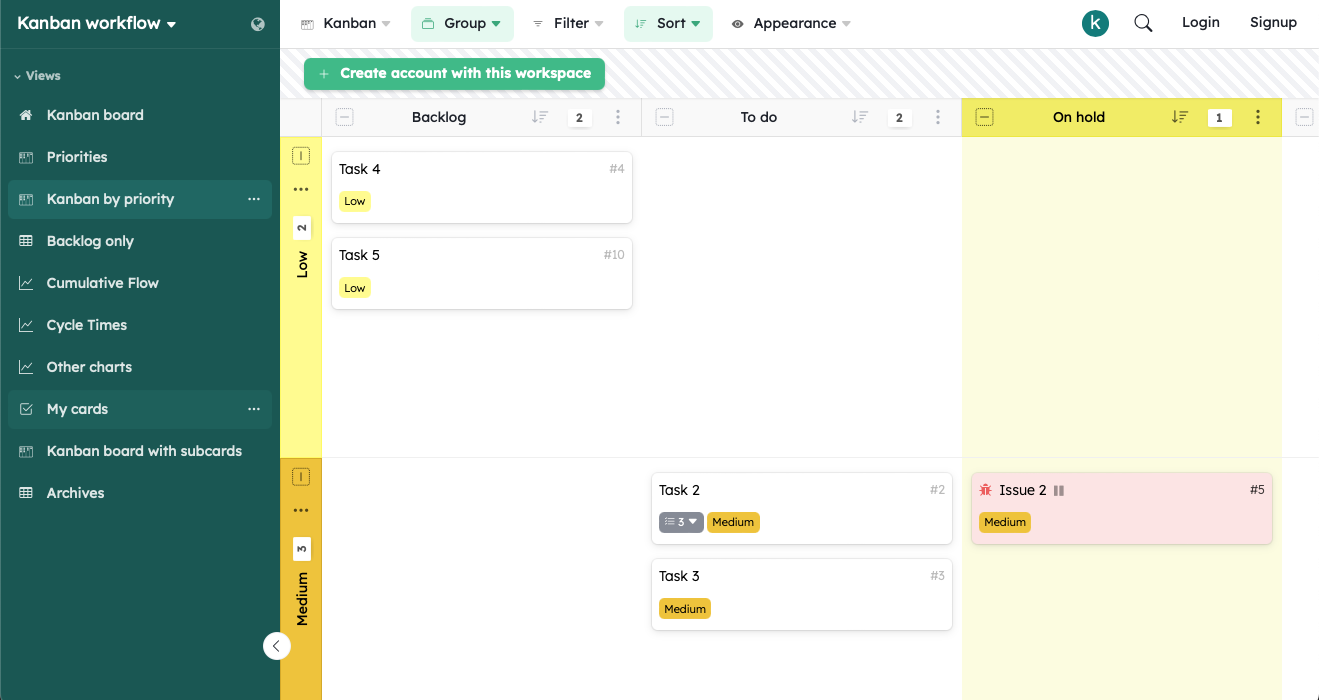Which scheduling software to choose in 2025?

In a professional world where efficiency and organization have become pillars of success, choosing the right scheduling software is essential for optimizing the management of your projects and resources. Whether you are leading a small team or managing complex projects in a large company, planning solutions have evolved significantly to meet the specific needs of each structure.
In 2025, the scheduling software market offers solutions suitable for all types of businesses and needs. These tools no longer just organize tasks: they now offer advanced features of automation, real-time collaboration, and data analysis to optimize your workflows.
In this article, we have analyzed and compared the six most efficient solutions on the market to help you identify the one that best suits your specific needs. From Trello to Kantree, including Monday.com, MS Project, or Asana, discover the strengths and weaknesses of each platform to make an informed choice.
In this article:
- Kantree
- Trello
- Monday
- MS Project
- Asana
- Feature Comparison
- How to Choose the Scheduling Software Suited to Your Needs?
- Conclusion
Kantree – The Collaborative and Customizable Scheduling Management Software Solution
Kantree stands out as a comprehensive scheduling management software offering great flexibility. Unlike other more rigid solutions, Kantree has been designed to adapt to virtually all types of projects and work methodologies, making it a particularly versatile tool.
 Kantree is the only tool to offer such customization of cards
Kantree is the only tool to offer such customization of cards
A Flexible Interface Adapted to All Types of Projects
One of Kantree’s strengths lies in its ability to adapt to the specific needs of each team and type of project. Whether you work according to an agile methodology, waterfall, or with a hybrid approach, Kantree’s interface can be configured to exactly reflect your workflow.
This flexibility is manifested through:
- Customizable fields to adapt task sheets to your specific needs
- The ability to create custom workflows for each project
- Customizable forms to standardize information entry
- Advanced filters to precisely view relevant information
- The ability to create reusable templates for your recurring projects
This adaptability makes Kantree a particularly appreciated tool by technical teams and organizations with specific business processes.
Visual Management with Kanban Boards, Gantt Charts, and Custom Views
Kantree offers customizable Gantt charts that adapt to all types of projects. The platform is not limited to a single visual approach but offers multiple visualization modes to adapt to the preferences of each user and the specific needs of each project.
The main available views include:
- Highly customizable Kanban boards
- Interactive Gantt charts to visualize deadlines and dependencies
- Calendar views for time planning
- List views for a more traditional approach
- Customizable dashboards with graphs and key indicators
This diversity of visualizations allows each team member to work with the view that suits them best while sharing the same underlying data. If you want to start with a Kanban template, just click on the photo 👇
Workflow Automation and Integration with Your Existing Tools
Modern planning tools integrate automation features that simplify the work of managers. Kantree particularly excels in this area by offering a powerful automation system that significantly reduces repetitive tasks.
Automation capabilities include:
- Triggers based on specific conditions (status change, due date, etc.)
- Automatic actions (assignment, notification, creation of related tasks, etc.)
- Validation rules to maintain data consistency
- Automatic reminders for important deadlines
In terms of integration, Kantree easily connects with many third-party tools such as Slack, Google Drive, GitHub, Zapier, and many others, thus allowing seamless integration into your existing ecosystem.
Real-Time Collaboration and Simplified Task Tracking
Collaboration is at the heart of Kantree’s philosophy. The platform offers advanced features to facilitate teamwork and communication around projects.
Notable collaborative features include:
- Simultaneous editing of tasks by multiple users
- Comments and discussions integrated directly into tasks
- Mentions to draw the attention of specific colleagues
- Customizable notifications to stay informed of important updates
- Easy sharing of specific views with internal or external collaborators
These features allow centralizing exchanges around projects, thus reducing the need for parallel communications via email or instant messaging.
Data Security and Compliance with GDPR Standards
In a context where data protection has become a major concern for companies, Kantree stands out for its commitment to security and regulatory compliance.
The platform offers:
- Data hosting in Europe, ensuring GDPR compliance
- Granular access controls to protect sensitive information
- Detailed audit logs to track all changes
- Advanced encryption options for sensitive data
- Regular backups and a robust business continuity plan
These security measures make Kantree a particularly suitable solution for organizations with strict data protection requirements, such as financial institutions or companies handling sensitive personal information.
Trello – The Simple and Intuitive Visual Planning Tool
Trello has established itself as a reference in the field of visual planning tools, used by over 2 million teams worldwide. This scheduling software focuses primarily on simplicity and intuitiveness to enable teams of all sizes to organize themselves effectively.
Kanban Boards for Visual Task Management
 Trello’s Kanban board
Trello’s Kanban board
The Kanban board is a powerful visual tool for tracking project progress and identifying bottlenecks. Trello offers a Kanban board-based approach that allows you to quickly visualize the progress of tasks. The principle is simple but effective: each task is represented by a card that is moved between different columns (To Do, In Progress, Done, etc.).
This visual method offers several advantages:
- A clear and immediate view of the overall project progress
- The ability to add colored labels to categorize tasks
- The addition of due dates and checklists to track progress
- The ability to attach files and documents directly to cards
Teams can thus collaborate effectively by having a shared vision of priorities and the progress of work.
Ease of Use and Quick Adoption
One of Trello’s main strengths lies in its ease of use. The clean and intuitive interface allows for almost immediate adoption, even for the least tech-savvy users. In a few minutes, any team member can create cards, assign them to colleagues, and track their progress.
This accessibility is reinforced by:
- A natural and responsive drag-and-drop interface
- Integrated tutorials for new users
- A powerful mobile app for managing tasks on the go
- Customizable notifications to stay informed of important updates
Trello also offers automations via its Butler tool, which allows you to create simple rules to automate repetitive tasks, such as automatically moving a card when a checklist is completed.
Limitations in Terms of Customization and Advanced Features
Despite its many strengths, Trello has certain limitations that may hinder its adoption by teams with complex needs. The simplicity that is its strength sometimes becomes a disadvantage when it comes to managing sophisticated projects requiring advanced features.
Main limitations include:
- The native absence of Gantt charts (although third-party extensions exist)
- Limited reporting and analysis capabilities
- Restricted customization options compared to more comprehensive solutions
- Difficulties in effectively managing task dependencies
- A free version limited to 10 boards
For small teams and simple projects, Trello remains an ideal solution. However, organizations with more complex needs might quickly feel constrained by this scheduling software.
Monday.com – The All-in-One Work Platform
Monday.com has established itself as a comprehensive project management and scheduling solution, with an impressive overall rating of 4.6/5 based on over 5,400 user reviews. This platform stands out for its versatility and ability to centralize all of a team’s activities.
Flexible Planning with Multiple Views (Kanban, Gantt, Calendar)
 Monday’s Kanban board
Monday’s Kanban board
Monday.com excels in its ability to offer different perspectives on the same data. This flexibility allows each team member to view the information in the way that suits them best.
The platform offers several types of views:
- Kanban view for a visual approach to workflows
- Gantt charts to visualize deadlines and dependencies
- Calendar view for time planning
- Table view for a structured approach to data
- Form view for standardized information entry
This diversity of visualizations is a major asset for multidisciplinary teams where each member may have different preferences for organizing and visualizing tasks.
Centralized Collaboration and Communication
One of Monday.com’s strengths lies in its ability to centralize all project-related communications. This centralization significantly reduces the need to juggle different tools and keeps the history of exchanges directly associated with the relevant tasks.
Collaboration features include:
- Discussion threads integrated into each item
- Mentions to draw the attention of specific colleagues
- File sharing directly within the platform
- Real-time activity updates
- Shared dashboards for a common view of progress
Monday.com also offers integration features with communication tools like Slack or Microsoft Teams, thus maintaining consistency in existing communication flows.
High Cost and Learning Curve for New Users
Despite its many strengths, Monday.com has some drawbacks that should be considered before choosing this solution. The cost of professional scheduling software varies considerably depending on the features offered, and Monday.com is positioned at the higher end of the market, especially for medium to large teams.
Main points of attention include:
- Pricing that can quickly increase with the number of users
- Advanced features reserved for the most expensive plans
- A rich interface that may seem intimidating to new users
- Adaptation time required to fully exploit the platform’s potential
- Advanced customization that requires an initial investment in configuration
These elements may be barriers for small structures or teams with simple planning needs. However, for organizations looking for a comprehensive and centralized solution, the investment may be justified by long-term productivity gains.
MS Project – The Robust Professional Scheduling Software
MS Project is recognized as a particularly suitable professional scheduling software for large enterprises. Developed by Microsoft, it is a proven and historical solution in the field of project management, particularly appreciated for its robustness and ability to manage complex projects.
Advanced Planning Features and Resource Management
Resource management is a crucial aspect of project planning, and MS Project particularly excels in this area. The platform offers sophisticated features for allocating, tracking, and optimizing the use of human and material resources.
Among the advanced resource management features are:
- Precise resource allocation with availability management
- Tracking costs associated with each resource
- Automatic detection of overallocations
- Load balancing to optimize resource utilization
- Detailed reports on resource usage
These capabilities allow project managers to maximize the efficiency of their teams while avoiding common problems such as work overload or allocation conflicts.
Comprehensive Tool for Large Enterprises and Complex Projects
MS Project is particularly suited to large organizations and complex projects requiring detailed planning. Its ability to manage large-scale projects makes it a tool of choice for companies with sophisticated project management needs.
Features that distinguish it for complex projects include:
- Portfolio management
- Multi-project tracking dashboards
- Management of interdependencies between projects
- Advanced analysis and reporting tools
- Integration with the Microsoft ecosystem (Teams, SharePoint, Power BI)
These capabilities allow large organizations to maintain a coherent view of all their initiatives while effectively managing resources shared across different projects.
Complex Interface and High Cost for Small Teams
Despite its many strengths, MS Project has some drawbacks that may limit its adoption, particularly for small structures. The user interface, while powerful, can be intimidating for new users and requires significant learning time.
Main limitations include:
- A steep learning curve requiring specific training
- High cost, with single licenses between €850 and €1,500 or subscriptions starting at €8.40 per month
- Complexity that may be excessive for simple projects
- Significant system resources required for desktop versions
- Limited mobility compared to more modern cloud solutions
These factors mean that MS Project is often overlooked by small teams in favor of more accessible and intuitive solutions, despite its undeniable power for complex projects.
Asana – The Task-Focused Project Management Tool
Asana has established itself as a popular project management solution, particularly appreciated for its simplicity and task-centered approach. With an elegant and intuitive interface, Asana facilitates collaboration and project tracking for teams of all sizes.
Task and Project Tracking with Lists and Boards
 Asana’s Kanban board
Asana’s Kanban board
Asana excels in organizing and tracking tasks through a flexible interface that adapts to different work styles. The platform allows you to visualize projects in multiple forms to suit the preferences of each user.
Main tracking features include:
- Task lists organized by project or assignee
- Kanban boards to visualize work progress
- Timelines to plan and track deadlines
- Calendars for a temporal view of tasks
- Customizable forms to standardize requests
This flexibility allows each team member to work with the view that suits them best while maintaining a single source of truth for the entire project.
Integration with Various Tools and Applications
A high-performing scheduling software must integrate seamlessly into the existing technological ecosystem of the company. Asana particularly shines in this area with over 200 available integrations, allowing the platform to connect to virtually all common enterprise tools.
Among the most useful integrations:
- Slack and Microsoft Teams for communication
- Google Drive, Dropbox, and OneDrive for file storage
- Zoom and Google Meet for video conferencing
- GitHub and Bitbucket for development teams
- Salesforce and HubSpot for sales teams
These connections allow for centralizing information and avoiding data silos, thereby improving the overall productivity of the team.
Lack of Flexibility for Teams with Specific Needs
Despite its many strengths, Asana has some limitations that may be problematic for teams with particular needs or non-standard processes. The simplicity that is its strength can sometimes become a constraint when complex workflows are needed.
Main limitations include:
- Less extensive customization options than some competitors
- Relatively basic reporting features
- Native absence of certain specialized views (such as Gantt charts in the free version)
- Limitations in terms of resource management
- A pricing model that can become expensive for teams wishing to access advanced features (€24.99 per user for the Business plan)
These constraints mean that Asana, while excellent for many use cases, may not be suitable for organizations with very specific processes or requiring extensive customization.
Comparison of Key Features
To help you choose the scheduling software best suited to your needs, here is a comparative table of the essential features offered by each of the analyzed solutions. This scheduling software comparison highlights the strengths and weaknesses of each platform.
| Features | Trello | Kantree | Monday | MS Project | Asana |
|---|---|---|---|---|---|
| Kanban Boards | ✅ | ✅ | ✅ | ⚠️ | ✅ |
| Gantt Charts | ⚠️* | ✅ | ✅ | ✅ | ⚠️* |
| Resource Management | ⚠️ | ✅ | ✅ | ✅ | ⚠️ |
| Workflow Automation | ✅ | ✅ | ✅ | ⚠️ | ✅ |
| Real-Time Collaboration | ✅ | ✅ | ✅ | ⚠️ | ✅ |
| Advanced Customization | ⚠️ | ✅ | ✅ | ✅ | ⚠️ |
| Mobile Applications | ✅ | ✅ | ✅ | ⚠️ | ✅ |
| Third-Party Integrations | ✅ | ✅ | ✅ | ⚠️ | ✅ |
| Leave Management | ❌ | ✅ | ⚠️ | ⚠️ | ❌ |
| GDPR Compliance | ⚠️ | ✅ | ⚠️ | ✅ | ⚠️ |
| Free Version | ✅ | ❌ | ✅ | ❌ | ✅ |
| Competitive Pricing | ✅ | ⚠️ | ⚠️ | ❌ | ⚠️ |
*Available only in paid versions or via extensions
✅ Full feature
⚠️ Limited feature or with restrictions
❌ Missing feature
As shown in this table, Kantree stands out for its versatility and rich functionality, offering all key features without compromise. This solution represents an excellent balance between flexibility, power, and ease of use.
How to Choose the Scheduling Software Suited to Your Needs?
Choosing the right scheduling software is essential for optimizing the management of your projects and resources. With so many options available on the market, it is important to adopt a methodical approach to identify the solution that will best meet your specific needs.
Evaluate the Size and Structure of Your Team
The size and organization of your team are determining factors in choosing scheduling software. The needs of a small startup differ considerably from those of a large company with multiple departments.
For small teams (fewer than 10 people):
- Prefer simple and intuitive solutions like Trello
- Opt for tools with a quick learning curve
- Look for options with good value for money
- Consider free versions that may be sufficient
For medium-sized teams (10-50 people):
- Look for a balance between simplicity and advanced features
- Prefer flexible tools like Kantree or Asana
- Ensure the solution facilitates collaboration between departments
- Check customization options to adapt the tool to your processes
For large organizations (more than 50 people):
- Consider robust solutions like MS Project or enterprise versions of Kantree
- Evaluate multi-project and multi-team management capabilities
- Check advanced reporting and analysis features
- Ensure the scalability of the solution to support your growth
Determine the Essential Features for Your Business
Each industry and organization has specific scheduling needs. Identifying the truly essential features will help you avoid paying for unnecessary options while ensuring the tool meets your fundamental requirements.
For technical and development teams:
- Integration with development tools (GitHub, Bitbucket)
- Sprint management and agile methodologies
- Bug and issue tracking
- Automation of development workflows
For marketing and creative teams:
- Management of editorial calendars and campaigns
- Content collaboration tools
- Approval and revision management
- Integration with creative tools
Investing in suitable scheduling software can significantly improve your team’s productivity, provided you choose a solution that precisely meets your business needs.
Consider the Budget and Return on Investment
The cost of scheduling software varies considerably depending on the features and the number of users. It is essential to evaluate not only the initial cost but also the potential return on investment in terms of productivity and efficiency gains.
Factors to consider in the cost-benefit analysis:
- Cost per user per month
- Implementation and training costs
- Potential savings in management time
- Reduction of errors and delays
- Improvement in customer satisfaction
- Optimization of resource utilization
Don’t forget to consider hidden costs such as team adaptation time or any necessary customizations. A more expensive but perfectly suited tool may prove more economical in the long run than a cheaper but limited solution.
Test Trial Versions to Evaluate User-Friendliness and Adaptability
Theory and comparisons are useful, but nothing replaces practical experience. Most scheduling software publishers offer free trial versions that allow you to test the tool in your real context.
Tips to make the most of trial periods:
- Involve future users in the testing phase
- Test the tool with real projects and scenarios
- Evaluate the ease of adoption by different user profiles
- Test integrations with your existing tools
- Solicit team feedback on the user experience
This testing phase is crucial to avoid unpleasant surprises after purchase and ensure that the chosen solution will indeed be adopted by the teams.
Conclusion
Choosing the right scheduling software for your specific needs can have a significant impact on the efficiency of your organization. In 2025, the market offers a variety of solutions ranging from simple tools like Trello to comprehensive and customizable platforms like Kantree.
Take the time to analyze your needs, compare the features offered by each solution, and test the tools in your real context. Don’t hesitate to consult our page on project management software or discover how agile management in business can transform your organization.
Whatever solution you choose, the important thing is that it adapts to your processes and not the other way around, and that it evolves with your needs to support the growth of your business.
To go further
Three possibilities are available to you if this topic interests you:
-
1
Try Kantree here, it is free and you don’t need any credit card
-
2
If you want to learn more about how Kantree can adapt to your challenges, make an appointment with an expert on your use case.
-
3
Are you willing to join +1500 professionals receiving our advices and news on digitalization, collaboration, productivity? Register to our newsletter here.
If this article was useful to you, consider sharing it. You can do it easily below.
